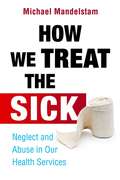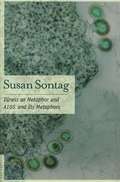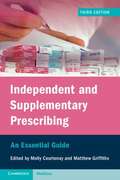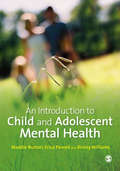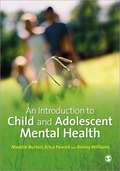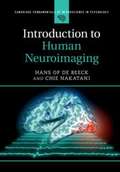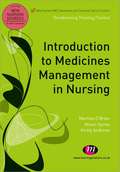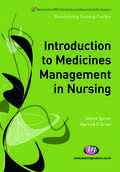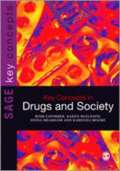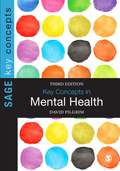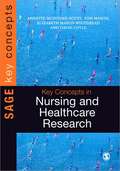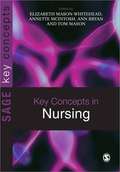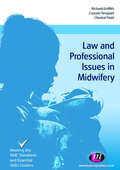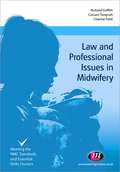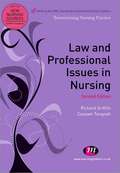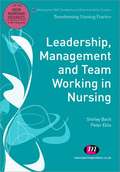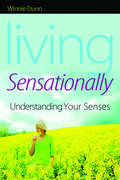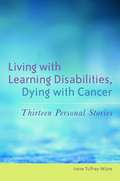- Table View
- List View
How We Treat the Sick: Neglect and Abuse in Our Health Services (PDF)
by Michael MandelstamNo official statistics are kept for the number of hospital patients, in particular older people, who are subjected to neglect and abuse. That is, left malnourished and dehydrated, in pain, allowed to develop agonising and fatal pressure sores, not taken to the toilet, left to lie in their own bodily waste, cared for in a filthy environment and at risk of infection, ignored, allowed to fall over repeatedly, not spoken to, left naked or dressed in other patients' clothes - and discharged from hospital prematurely. This book bears witness to all these practices and more. Setting out a wealth of evidence not previously brought together, Michael Mandelstam shows beyond question that neglectful care is a systemic blight, rather than mere local blemish, within our health services. He analyses the causes and factors involved, reveals the widespread denial and lack of accountability on the part of those responsible - and spells out the political, moral, professional and legal implications of this failure to care for the most vulnerable of patients with humanity and compassion. Most important, Mandelstam points to the main obstacles to a solution - and to how they can be removed and change be accomplished. This book should be read by anyone concerned with the state of our health services, including National Health Service users, government policy makers and planners, public health practitioners and academics and researchers.
Human Skeleton (Tactile)
by Adrian FarnswrothThis is an image of a human skeleton seen from the front. The head is at the top of the page and the skeleton's arms are held out from its sides. It's legs are at the bottom of the page.
Illness As Metaphor And Aids And Its Metaphors (PDF)
by Susan SontagIn l978 Sontag wrote Illness As Metaphor. A cancer patient herself at the time, she shows how the metaphors and myths surrounding certain illnesses, especially cancer, add greatly to the suffering of the patients and often inhibit them from seeking proper treatment. By demystifying the fantasies surrounding cancer, Sontag shows cancer for what it is - just a disease. Cancer is not a curse, not a punishment, certainly not an embarrassment, and highly curable, if good treatment is found early enough. Almost a decade later, with the outbreak of a new, stigmatised disease replete with mystifications and punitive metaphors, Sontag wrote Aids and its Metaphors, extending the argument of the earlier book to the AIDS pandemic.
Independent And Supplementary Prescribing: An Essential Guide
by Molly Courtenay Matthew GriffithsWritten by a group of multi-professional authors, this fully updated third edition builds on the success of this classic text. The book explores a number of key areas for prescribers, including prescribing within a multidisciplinary team context, consultation skills, ethical and legal issues surrounding prescribing, the psychology and sociology of prescribing, and applied pharmacology. Among the other topics featured are monitoring skills, medicines concordance, evidence based prescribing, prescribing within a public health perspective, calculation skills, prescribing in dermatology, and minimizing the risk of prescribing errors. Each chapter has been revised and additional chapters on antimicrobial prescribing, education and training to become a prescriber, and a new section on renal impairment have been added. This book is an essential resource for both new and experienced prescribers and anyone undertaking the non-medical prescribing (NMP) programme including nurses, pharmacists, allied health professionals and optometrists.
Internal structure of the Brain (large Print)
by Rnib BookshareThis image shows a mid-saggital cross-section of the brain (i.e. through longitudinal fissure, in the centre of the brain). There is a locator dot shown, which will be at the top left of the page when the image is the right way up. There is an image border surrounding the image and labels. The main part of the brain is labelled cerebrum with the front of the brain on the left. Down from this in the centre is the pons, medulla and the spinal cord which extends to the bottom of the page. To the right of the pons and the medulla is the cerebellum. In the centre of the diagram is the corpus callosum which is a curved horizontal shape, and the three oval structures below this depict the thalamus, hypothalamus and pineal gland. The pituitary gland is below and to the left of the hypothalamus. Note: the thalamus is not in centre of the brain, there is one in each hemisphere just on either side of the longitudinal fissure.
Internal structure of the Brain (UEB contracted)
by Rnib BookshareThis image shows a mid-saggital cross-section of the brain (i.e. through longitudinal fissure, in the centre of the brain). There is a locator dot shown, which will be at the top left of the page when the image is the right way up. There is an image border surrounding the image and labels. The main part of the brain is labelled cerebrum with the front of the brain on the left. Down from this in the centre is the pons, medulla and the spinal cord which extends to the bottom of the page. To the right of the pons and the medulla is the cerebellum. In the centre of the diagram is the corpus callosum which is a curved horizontal shape, and the three oval structures below this depict the thalamus, hypothalamus and pineal gland. The pituitary gland is below and to the left of the hypothalamus. Note: the thalamus is not in centre of the brain, there is one in each hemisphere just on either side of the longitudinal fissure.
Internal structure of the Brain (UEB uncontracted)
by Rnib BookshareThis image shows a mid-saggital cross-section of the brain (i.e. through longitudinal fissure, in the centre of the brain). There is a locator dot shown, which will be at the top left of the page when the image is the right way up. There is an image border surrounding the image and labels. The main part of the brain is labelled cerebrum with the front of the brain on the left. Down from this in the centre is the pons, medulla and the spinal cord which extends to the bottom of the page. To the right of the pons and the medulla is the cerebellum. In the centre of the diagram is the corpus callosum which is a curved horizontal shape, and the three oval structures below this depict the thalamus, hypothalamus and pineal gland. The pituitary gland is below and to the left of the hypothalamus. Note: the thalamus is not in centre of the brain, there is one in each hemisphere just on either side of the longitudinal fissure.
An Introduction to Child and Adolescent Mental Health
by Erica Pavord Briony Williams Maddie BurtonAnyone who works within children and adolescent mental health services will tell you what a challenging and complex world it is. To help prepare you, the authors have produced a clear introduction to child and adolescent mental health that takes you step-by-step on a journey through the subject. Beginning with the foundations, the book explores the common mental health concepts and influences that you can expect to encounter examining topics like the difference between emotional and mental health issues and how mental health problems develop. It then moves on to explore the vital skills that you will need to develop like effective communication and basic counselling skills, and introduces some of the common interventions like Cognitive Behavioural Therapy, Psychodynamic theory and Family work. Written by a multi-disciplinary team of passionate and experienced experts, the book strikes an effective balance between introducing the relevant theory and showing how this can be applied in the real world. It is an essential starting point to the subject of child and adolescent mental health and suitable for any students planning to support this group.
An Introduction To Child And Adolescent Mental Health (PDF)
by Briony Williams Erica Pavord Maddie BurtonAnyone who works within children and adolescent mental health services will tell you what a challenging and complex world it is. To help prepare you, the authors have produced a clear introduction to child and adolescent mental health that takes you step-by-step on a journey through the subject. Beginning with the foundations, the book explores the common mental health concepts and influences that you can expect to encounter examining topics like the difference between emotional and mental health issues and how mental health problems develop. It then moves on to explore the vital skills that you will need to develop like effective communication and basic counselling skills, and introduces some of the common interventions like Cognitive Behavioural Therapy, Psychodynamic theory and Family work. Written by a multi-disciplinary team of passionate and experienced experts, the book strikes an effective balance between introducing the relevant theory and showing how this can be applied in the real world. It is an essential starting point to the subject of child and adolescent mental health and suitable for any students planning to support this group.
Introduction To Human Neuroimaging (Cambridge Fundamentals Of Neuroscience In Psychology Ser.)
by Hans Op de Beeck Chie NakataniDeveloped specifically for students in the behavioral and brain sciences, this is the only textbook that provides an accessible and practical overview of the range of human neuroimaging techniques. Methods covered include functional and structural magnetic resonance imaging, positron emission tomography, electroencephalography, magnetoencephalography, multimodal imaging, and various brain stimulation methods. Experimental design, image processing, and statistical inference are also addressed, with chapters for both basic and more advanced data analyses. Key concepts are illustrated through research studies on the relationship between brain and behavior, and practice questions are included throughout to test knowledge and aid self-study. Offering just the right amount of detail for understanding how major imaging techniques can be applied to answer neuroscientific questions, and the practical skills needed for future research, this is an essential text for advanced undergraduate and graduate students in psychology, neuroscience, and cognitive science programs taking introductory courses on human neuroimaging.
Introduction to Medicines Management in Nursing
by Martina O'Brien Alison Spires Kirsty AndrewsManaging medicines can seem a daunting prospect for new nursing students, but is a crucial skill they must develop from day one to provide safe care to their patients. This book specifically supports first-year, pre-registration students in meeting the required competencies for medicines management needed for progression into the second year. It is structured around the NMC Essential Skills Clusters, providing a clear introduction to law, calculations, administration, introductory pharmacology, patient communication and contextual issues applied to medicines management. The book is written in user-friendly language and uses patient scenarios to explain concepts and apply theory to practice.
Introduction to Medicines Management in Nursing (1st edition) (PDF)
by Martina O'Brien Alison Spires Kirsty AndrewsManaging medicines can seem a daunting prospect for new nursing students, but is a crucial skill they must develop from day one to provide safe care to their patients. This book specifically supports first-year, pre-registration students in meeting the required competencies for medicines management needed for progression into the second year. It is structured around the NMC Essential Skills Clusters, providing a clear introduction to law, calculations, administration, introductory pharmacology, patient communication and contextual issues applied to medicines management. The book is written in user-friendly language and uses patient scenarios to explain concepts and apply theory to practice.
Introduction to Medicines Management in Nursing (PDF)
by Martina O'Brien Alison Spires Kirsty AndrewsManaging medicines can seem a daunting prospect for new nursing students, but is a crucial skill they must develop from day one to provide safe care to their patients. This book specifically supports first-year, pre-registration students in meeting the required competencies for medicines management needed for progression into the second year. It is structured around the NMC Essential Skills Clusters, providing a clear introduction to law, calculations, administration, introductory pharmacology, patient communication and contextual issues applied to medicines management. The book is written in user-friendly language and uses patient scenarios to explain concepts and apply theory to practice.
Introduction to Medicines Management in Nursing (PDF)
by Alison Spires Kirsty Andrews Martina O'BrienManaging medicines can seem a daunting prospect for new nursing students, but is a crucial skill they must develop from day one to provide safe care to their patients. This book specifically supports first-year, pre-registration students in meeting the required competencies for medicines management needed for progression into the second year. It is structured around the NMC Essential Skills Clusters, providing a clear introduction to law, calculations, administration, introductory pharmacology, patient communication and contextual issues applied to medicines management. The book is written in user-friendly language and uses patient scenarios to explain concepts and apply theory to practice.
Key Concepts In Drugs And Society (PDF)
by Karenza Moore Karen Mcelrath Ross Coomber Fiona Measham'This is a great resource that reflects the huge expertise of the authors. It will be welcomed by students, researchers and indeed anyone wanting critical but comprehensive coverage of key issues and trends concerning drugs and society - locally and globally, historically and today. ' - Nigel South, Professor of Sociology, University of Essex 'Provides informative, balanced and contextualized insights into the relationships between people and drugs. Whatever your background and however knowledgeable you feel you are about contemporary drug issues, I guarantee that you will learn something unexpected and new from this valuable text. ' - Joanne Neale, Professor of Public Health, Oxford Brookes University Why do people take drugs? How do we understand moral panics? What is the relationship between drugs and violence? How do people's social positions influence their involvement in drug use? Insightful and illuminating, this book discusses drugs in social contexts. The authors bring together their different theoretical and practical backgrounds, offering a comprehensive and interdisciplinary introduction that opens up a wide scientific understanding moving beyond cultural myths and presuppositions. This is an invaluable reference source for students on criminology, sociology and social sciences programmes, as well as drug service practitioners such as drug workers, social workers and specialist nurses.
Key Concepts in Mental Health (3rd edition) (PDF)
by David PilgrimThis is the only text to give you a complete, concise overview of mental health and all the issues that surround it from a theoretical and practical point of view. Split into three sections, the book defines mental health and mental illness, examines the services and settings in which mental health care takes place and discusses the societal issues surrounding mental health. Made up of 63 bite-sized chapters, the book offers: Definitions of the key concepts nbsp; Key points that you need to know for your study and practice nbsp; Further reading to help you expand your knowledge It will be essential reading for students of health, nursing, mental health, social work and social care. It is also valuable reading for students of counselling and psychotherapy.
Key Concepts in Nursing and Healthcare Research (PDF)
by Annette Mcintosh-ScottThe SAGE Key Concepts series provides students with accessible and authoritative knowledge of the essential topics in a variety of disciplines. Cross-referenced throughout, the format encourages critical evaluation through understanding. Written by experienced and respected academics, the books are indispensable study aids and guides to comprehension. 9781446296066
Key Concepts In Nursing (PDF)
by Elizabeth Mason-WhiteheadNursing can be complex and challenging to new students and trainee practitioners. Key Concepts in Nursing provides a much needed guide to the central topics and debates which shape nursing theory, policy and contemporary practice.
Law and Professional Issues in Midwifery (1st edition) (PDF)
by Cassam Tengna Chantal Patel Richard GriffithMidwives are accountable to the public, patients, their employers and the profession. It is essential that student midwives have a clear understanding of the legal and professional dilemmas they face in the course of their career and how to address those dilemmas in order to practise effectively. This book is an essential resource for student midwives developing their knowledge and understanding of the requirements for safe practice. It provides a clear introduction to the subject, with activities and case studies throughout to illustrate key principles and apply the law in context.
Law and Professional Issues in Midwifery (PDF)
by Cassam Tengna Chantal Patel Richard GriffithMidwives are accountable to the public, patients, their employers and the profession. It is essential that student midwives have a clear understanding of the legal and professional dilemmas they face in the course of their career and how to address those dilemmas in order to practise effectively. This book is an essential resource for student midwives developing their knowledge and understanding of the requirements for safe practice. It provides a clear introduction to the subject, with activities and case studies throughout to illustrate key principles and apply the law in context.
Law and Professional Issues in Midwifery (PDF)
by Cassam Tengna Chantal Patel Richard GriffithMidwives are accountable to the public, patients, their employers and the profession. It is essential that student midwives have a clear understanding of the legal and professional dilemmas they face in the course of their career and how to address those dilemmas in order to practise effectively. This book is an essential resource for student midwives developing their knowledge and understanding of the requirements for safe practice. It provides a clear introduction to the subject, with activities and case studies throughout to illustrate key principles and apply the law in context.
Law and Professional Issues in Nursing (2nd edition)
by Richard Griffith Cassam TengnahNurses are more accountable than ever to the public, patients, their employers and the profession and it is vital that they have a clear understanding of the legal, ethical and professional dilemmas they will face in the course of their professional career. This book is an essential resource for student nurses as they begin to develop their knowledge and understanding of the requirements for safe practice in healthcare. This new edition includes increased coverage of protection of vulnerable adults and ethics and principled decision making.
Leadership, Management and Team Working in Nursing (PDF)
by Peter Ellis Shirley BachLeadership, management and team working have become central to the role of the nurse, as recognised in the latest NMC standards for education.
Living Sensationally: Understanding Your Senses
by Winnie DunnHow do you feel when you bite into a pear… wear a feather boa… stand in a noisy auditorium… or look for a friend in a crowd? Living Sensationally explains how people's individual sensory patterns affect the way we react to everything that happens to us throughout the day. Some people will adore the grainy texture of a pear, while others will shudder at the idea of this texture in their mouths. Touching a feather boa will be fun and luxurious to some, and others will bristle at the idea of all those feathers brushing on the skin. Noisy, busy environments will energize some people, and will overwhelm others. The author identifies four major sensory types: Seekers; Bystanders; Avoiders and Sensors. Readers can use the questionnaire to find their own patterns and the patterns of those around them, and can benefit from practical sensory ideas for individuals, families and businesses. Armed with the information in Living Sensationally, people will be able to pick just the right kind of clothing, job and home and know why they are making such choices.
Living with Learning Disabilities, Dying with Cancer: Thirteen Personal Stories
by Irene Tuffrey-Wijne Sheila HollinsThis book is a powerful and moving account of the experiences of 13 people with learning disabilities who were living with cancer. The author followed their lives as part of a 3-year research study, during which 10 people died. She spent extensive periods of time with them at their homes and day centres, in hospitals, hospices and nursing homes. In doing so, she gained a unique understanding of what it is like for individuals with learning disabilities to live with deteriorating health and how this may impact upon their families, friends and carers. How was each person's cancer diagnosed? How was their cancer and its implications explained to them? How much did they understand and how did they cope with treatment? What happened when they were dying? In answering these questions, the book exposes the suffering of people with learning disabilities at the end of their lives, but also their remarkable resilience and strength. In an optimistic final chapter, the author demonstrates how people with learning disabilities can best be supported at the end of life. This book will be an invaluable resource for anyone involved in the care and support of people with learning disabilities who have cancer and who are dying, including health and social care professionals, families and friends.
